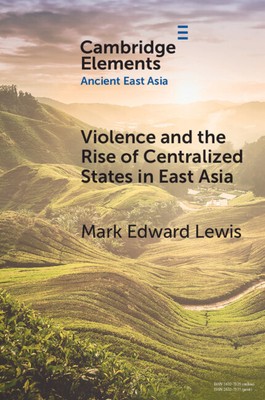
- We will send in 10–14 business days.
- Author: Mark Edward Lewis
- Publisher: Cambridge University Press
- ISBN-10: 1108972144
- ISBN-13: 9781108972147
- Format: 15.2 x 22.9 x 0.3 cm, minkšti viršeliai
- Language: English
- SAVE -10% with code: EXTRA
Violence and the Rise of Centralized States in East Asia (e-book) (used book) | bookbook.eu
Reviews
Description
Violence, both physical and nonphysical, is central to any society, but it is a version of the problem that it claims to solve. This Element examines how states in ancient East Asia, from the late Shang through the end of the Han dynasty, wielded violence to create and display authority, and also how their licit violence was entangled in the 'savage' or 'criminal' violence whose suppression justified their power. The East Asian cases are supplemented through citing comparable Western ones. The themes examined include the emergence of the warrior as a human type, the overlap of hunts and combat (and the overlap between treatments of alien species and alien peoples), sacrifice of both alien captives and 'death attendants' from one's own groups, the impact of military specialization and the increased scale of armies, the emergent ideal of self-sacrifice, and the diverse aspects of violence in the regime of law.
EXTRA 10 % discount with code: EXTRA
The promotion ends in 23d.06:02:44
The discount code is valid when purchasing from 10 €. Discounts do not stack.
- Author: Mark Edward Lewis
- Publisher: Cambridge University Press
- ISBN-10: 1108972144
- ISBN-13: 9781108972147
- Format: 15.2 x 22.9 x 0.3 cm, minkšti viršeliai
- Language: English English
Violence, both physical and nonphysical, is central to any society, but it is a version of the problem that it claims to solve. This Element examines how states in ancient East Asia, from the late Shang through the end of the Han dynasty, wielded violence to create and display authority, and also how their licit violence was entangled in the 'savage' or 'criminal' violence whose suppression justified their power. The East Asian cases are supplemented through citing comparable Western ones. The themes examined include the emergence of the warrior as a human type, the overlap of hunts and combat (and the overlap between treatments of alien species and alien peoples), sacrifice of both alien captives and 'death attendants' from one's own groups, the impact of military specialization and the increased scale of armies, the emergent ideal of self-sacrifice, and the diverse aspects of violence in the regime of law.


Reviews